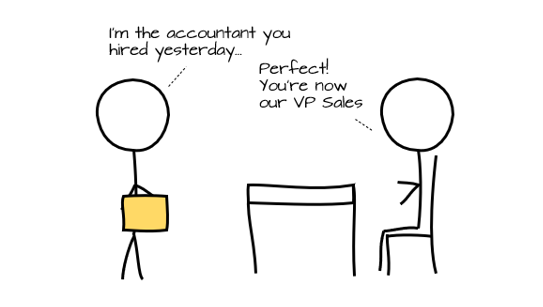How to hire in high-growth environments
Recruiting is tricky.
It’s hard to know who will be the right fit until you’ve seen them in action.
Recruiting for high-growth companies is even harder, because the role itself is a moving target.
So how do you build a recruiting process when you’re faced with so many unknowns?
You must shift your thinking from ‘filling a role’ to ‘fueling the future’.
The challenge recruiting practices face in a high-growth environment
For most organizations, very specific job descriptions and evaluation criteria for a role is a best practice. These are defined using the processes that an individual will own, what they’re accountable for, and how their success will be measured.
The goal is clarity, transparency, and reduction of bias.
This makes sense for mature organizations, as these elements have been well-defined and will stay true for years.
But in the uncertain world of start-ups, things are different.
Not only is the business evolving rapidly, but the functions and roles themselves change every day.
Often what you are looking for when you hire, is for that person to break out of that role description and create something even better.
So how do you hire for that?
Adjusting recruiting approaches for a high-growth environment
Successfully recruiting for high-growth roles means thinking beyond the job description you’ll expect that person to fulfil day-one.
For me that comes down to three things:
In your recruitment process, focus on identifying whether the individual has a vision for the future.
Show them how your current puzzle is arranged, and see if they see another possible picture.
You want someone who can think much bigger than their role, so test that skill set.
Look at the core functions that exist in your organization. Inquire about the adjacent areas you expect that they’ll influence some day.
You want to make sure they can stretch their thinking beyond their immediate domain, and can grow along with the organization.
Bring in colleagues from other functions to see how they interact.
Finally, look at the specific role they will play today, and test for their ability to meet Day 1 expectations.
This will ensure that you don’t over-correct and bring in a visionary that can’t actually carry their expected load.
By re-orienting your process to focus on the candidate’s long-term potential, you’ll ensure you’ve got the right team to support growth no matter what direction you end up taking.
Could your network benefit from this reframe? Share below!





















